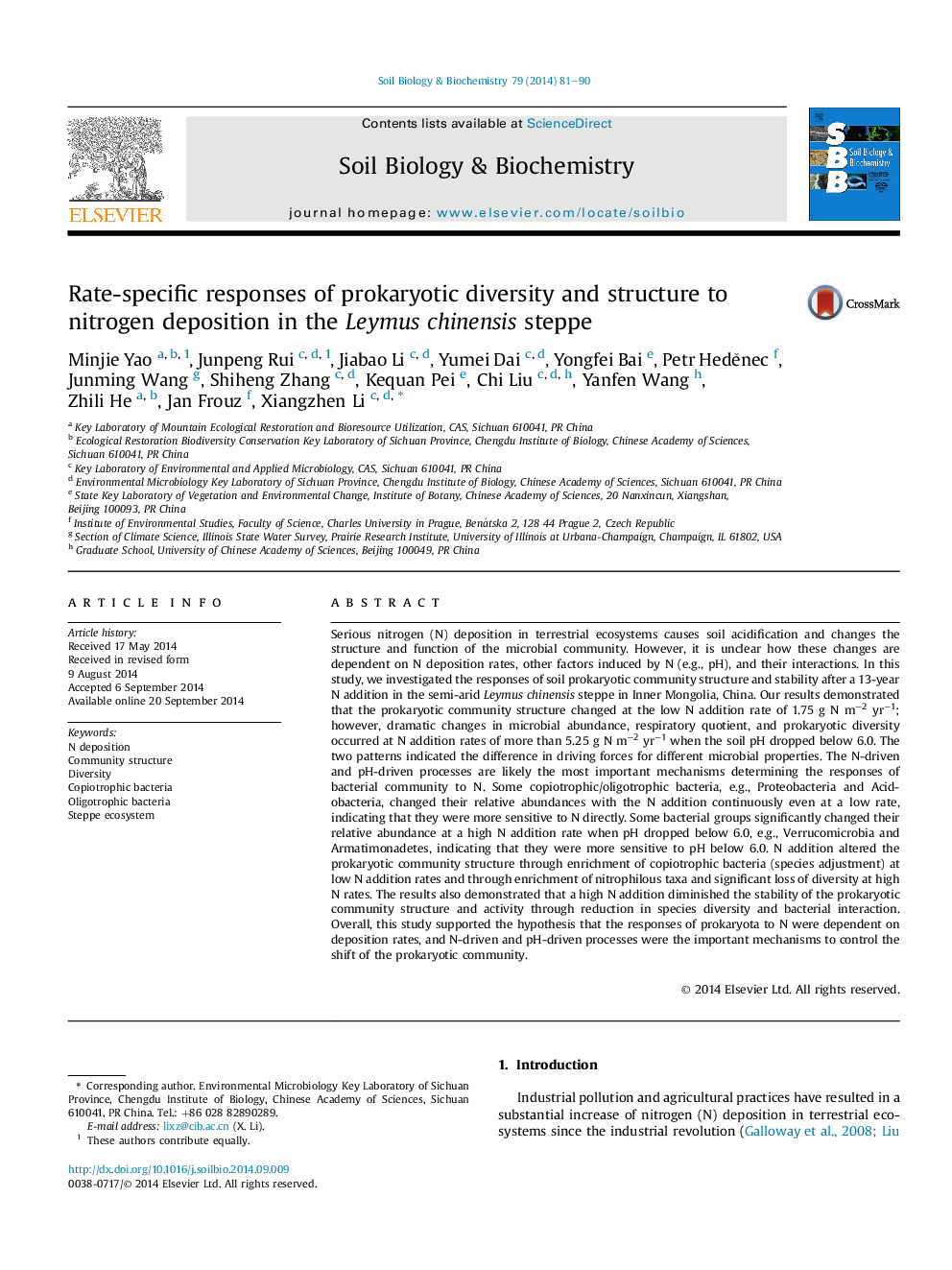| کد مقاله | کد نشریه | سال انتشار | مقاله انگلیسی | نسخه تمام متن |
|---|---|---|---|---|
| 2024643 | 1542605 | 2014 | 10 صفحه PDF | دانلود رایگان |
عنوان انگلیسی مقاله ISI
Rate-specific responses of prokaryotic diversity and structure to nitrogen deposition in the Leymus chinensis steppe
دانلود مقاله + سفارش ترجمه
دانلود مقاله ISI انگلیسی
رایگان برای ایرانیان
کلمات کلیدی
موضوعات مرتبط
علوم زیستی و بیوفناوری
علوم کشاورزی و بیولوژیک
دانش خاک شناسی
پیش نمایش صفحه اول مقاله

چکیده انگلیسی
Serious nitrogen (N) deposition in terrestrial ecosystems causes soil acidification and changes the structure and function of the microbial community. However, it is unclear how these changes are dependent on N deposition rates, other factors induced by N (e.g., pH), and their interactions. In this study, we investigated the responses of soil prokaryotic community structure and stability after a 13-year N addition in the semi-arid Leymus chinensis steppe in Inner Mongolia, China. Our results demonstrated that the prokaryotic community structure changed at the low N addition rate of 1.75 g N mâ2 yrâ1; however, dramatic changes in microbial abundance, respiratory quotient, and prokaryotic diversity occurred at N addition rates of more than 5.25 g N mâ2 yrâ1 when the soil pH dropped below 6.0. The two patterns indicated the difference in driving forces for different microbial properties. The N-driven and pH-driven processes are likely the most important mechanisms determining the responses of bacterial community to N. Some copiotrophic/oligotrophic bacteria, e.g., Proteobacteria and Acidobacteria, changed their relative abundances with the N addition continuously even at a low rate, indicating that they were more sensitive to N directly. Some bacterial groups significantly changed their relative abundance at a high N addition rate when pH dropped below 6.0, e.g., Verrucomicrobia and Armatimonadetes, indicating that they were more sensitive to pH below 6.0. N addition altered the prokaryotic community structure through enrichment of copiotrophic bacteria (species adjustment) at low N addition rates and through enrichment of nitrophilous taxa and significant loss of diversity at high N rates. The results also demonstrated that a high N addition diminished the stability of the prokaryotic community structure and activity through reduction in species diversity and bacterial interaction. Overall, this study supported the hypothesis that the responses of prokaryota to N were dependent on deposition rates, and N-driven and pH-driven processes were the important mechanisms to control the shift of the prokaryotic community.
ناشر
Database: Elsevier - ScienceDirect (ساینس دایرکت)
Journal: Soil Biology and Biochemistry - Volume 79, December 2014, Pages 81-90
Journal: Soil Biology and Biochemistry - Volume 79, December 2014, Pages 81-90
نویسندگان
Minjie Yao, Junpeng Rui, Jiabao Li, Yumei Dai, Yongfei Bai, Petr HedÄnec, Junming Wang, Shiheng Zhang, Kequan Pei, Chi Liu, Yanfen Wang, Zhili He Zhili He, Jan Frouz, Xiangzhen Li,